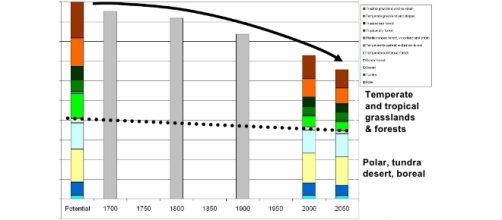On July 13th 2016, the European Commission took an important step in halting Biodiversity loss. They did this by adopting a list of 37 invasive alien species that require action across the EU. The scale of the damage that these particular species contain, justify dedicated measures. These measures are adopted across the European Union. This is the first list of its kind, with more likely to follow in the future.
Currently there are 12000 species of plants, fungi, animals and micro-organisms in the EU that are considered to be alien to their natural environment.
Approximately 15% of those are considered to be invasive, with numbers rapidly growing. The alien species crowd out indigenous species, and subsequently are one of the biggest causes to biodiversity loss. These losses can be economically felt also.
Background on the Policy
The EU regulation of invasive species was first enforced on the 1st January 2015. Where at its core is a list of species that are invasive alien species, that are of EU concern. The example is the list adopted on the 13th of July 2016. The reason that it has taken this long to draw up such a list is that it is based on robust scientific risk assessments. Where it also had to be approved by a Committee of state representatives.
From which it was agreed that invasive alien species of concern to the EU, would be subject to restrictions and measures. IAS regulation requires three distinct type of measures to be enacted; prevention, early detection and rapid eradication of new invasive species. Also there is a requirement for management of already established invasive alien species.
The total of 37 species where compiled with criteria set out by the EU. Examples include; the American bullfrog (Lithobates catesbeianus), the slider turtle (Trachemys scripta), Eastern Baccharis (Baccharis halimifolia, a plant) and the grey squirrel (Sciurus carolinensis). All of which are native to North America. As well as the yellow legged hornet (Vespa velutina) from South East Asia.
The water hyacinth (Eichornia crassipes) and the coypu (Myocastor coypusfrom) from South America. Also including the equally problematic species; the African curly weed Lagarosiphon majoror the Indian house crow Corvus splendens.
Regulation on Invasive Alien Species
There is now a certain set of restrictions and measures, that species will be subject to. This has been set out by the EU and forms the Regulation on invasive species. The restrictions include keeping, importing, selling, breeding and growing. Measures include member states are required to ensure early detection and rapid eradication. As well as manage species that are already widespread within territory of member states. There are also special regulations that deal specific needs of pet owners, traders, breeders and stakeholders.
This is a list that will be updated regularly, to include those further species that could have significant impact of biodiversity.
Karmenu Vella, EU Commissioner for Environment, Fisheries and Maritime Affairs said:
“Some species of plants and animals can damage property, crops and livelihoods so they need to be kept out if possible and under control if not. This needs to be done at EU level as invasive species don’t stop at borders. We are acting on a problem that cannot be ignored as it costs us over € 12 billion every year. This first list, generated with the help of Member States, will be kept under review and work is already ongoing currently to update the list to consider other strong cases."
A Positive Step for Biodiversity
This is a positive step forward for biodiversity and the effect it can have on our ecosystem.
Despite the longevity of the process, in regards to environmental policy this would be vital in tackling the long-term effects of environmental issues. Biodiversity is a big problem across Europe, with damages to property, crops and livelihoods. A degree of control has to be enforced at EU level because invasive species do not stop at borders.

